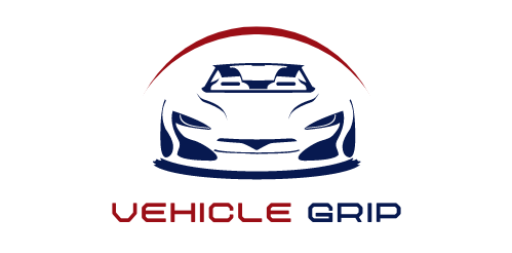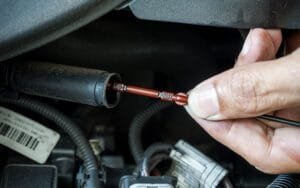When I first got behind the wheel of a Chevy with the 1.5L turbo engine, I was impressed by how smooth and efficient it felt. This engine, commonly found in models like the Chevrolet Equinox and Malibu, was designed to balance performance and fuel economy.
On paper, it looked like the perfect package—plenty of power for everyday driving, modern turbocharged technology, and better mileage than some larger engines.
But as I started digging deeper into ownership experiences and talking with other Chevy owners, I realized that the 1.5L engine has its fair share of problems. While many people enjoy trouble-free miles, others face issues that can be frustrating and costly if not addressed early.
In this guide, I’ll share what I’ve learned about the most common problems with the 1.5L Chevy engine, how to recognize them, and what you can do to prevent or fix them.
Understanding the 1.5L Chevy Engine
Before diving into the issues, it’s important to understand what this engine is all about. The 1.5L turbocharged inline-4 was introduced by General Motors as part of its EcoTec family. It’s a small displacement engine with turbocharging and direct injection, aiming to deliver:
- Horsepower: Around 170 hp (varies slightly by model year).
- Torque: About 203 lb-ft, giving it decent pulling power for daily driving.
- Fuel Efficiency: Better than older naturally aspirated engines, especially on highways.
This engine is widely used in Chevy vehicles such as:
- Chevrolet Malibu
- Chevrolet Equinox
- Chevrolet Cruze (in certain trims)
On the surface, it looks like a solid piece of engineering. However, once these engines started getting real-world miles, patterns of common issues began to appear.
Common Problems with the 1.5L Chevy Engine
1. Oil Consumption Issues
One of the most frequently reported concerns is excessive oil consumption. Some owners have noticed that the oil level drops faster than expected, even between regular service intervals.
What causes it?
- Turbocharged engines tend to run hotter, which can lead to oil breakdown.
- Piston ring design in earlier versions of the engine may allow more oil to slip past into the combustion chamber.
Signs to look for:
- Blue smoke from the exhaust
- Oil warning light coming on too soon
- Needing to top off oil frequently
If ignored, low oil can cause internal wear and damage the turbocharger.
2. Carbon Buildup from Direct Injection
The 1.5L Chevy engine uses direct fuel injection. While this helps with performance and efficiency, it has a downside—carbon deposits can build up on the intake valves.
Why does this happen?
Since fuel is sprayed directly into the cylinder instead of passing over the intake valves, there’s no natural cleaning effect. Over time, carbon sticks to the valves, leading to rough idling and reduced performance.
Symptoms include:
- Rough starts in the morning
- Hesitation when accelerating
- Loss of power over time
Regular cleaning, such as walnut blasting, can help prevent serious issues.
3. Turbocharger Failures
Turbocharging is one of the main selling points of this engine, but it also introduces extra stress. Some owners report turbo failures, especially in higher-mileage vehicles.
Possible reasons include:
- Poor lubrication due to oil issues
- Excessive heat damaging bearings
- Contaminants in the oil clogging turbo passages
What you might notice:
- Whining noise from the engine bay
- Sudden loss of power
- Check engine light with turbo-related codes
While not extremely common, when it happens, repairs can be expensive.
4. Cooling System Problems
Another issue that has come up is with the cooling system, particularly coolant leaks. A leaking water pump or failing seals can cause overheating, which is very dangerous for a turbocharged engine.
Signs of trouble:
- Coolant level dropping frequently
- Engine temperature gauge running higher than normal
- Sweet smell of coolant around the car
If overheating is not caught early, it can lead to head gasket failure or even engine replacement.
5. Timing Chain Concerns
Some owners have reported timing chain problems, such as stretching or rattling. A failing timing chain can cause poor performance, misfires, or in worst cases, catastrophic engine damage.
What to watch for:
- Rattling noise at startup
- Engine misfires
- Loss of synchronization between camshaft and crankshaft
Since the timing chain is a critical component, any unusual noise should be checked immediately.
6. Fuel System Issues
Being a direct injection engine, the high-pressure fuel pump is under constant stress. Failures in the pump or injectors can cause stalling, rough idling, or poor fuel economy.
Symptoms:
- Engine hesitation under load
- Check engine light for fuel system codes
- Strong fuel smell due to leaks
This problem isn’t widespread but is worth being aware of.
How to Recognize Problems Early
Catching issues early can save you thousands in repair bills. Here are a few things I always keep in mind:
- Check your oil level frequently – At least once a month, not just at service intervals.
- Listen for unusual noises – Knocking, rattling, or whining sounds should not be ignored.
- Monitor performance changes – If your car suddenly feels sluggish, it might be more than just bad fuel.
- Look for warning lights – A check engine light should always be scanned with a diagnostic tool.
- Watch temperature gauges – Even a slight increase in operating temperature could point to cooling issues.
Maintenance Tips to Prevent Problems
I’ve learned that preventive care is the best defense against engine issues. Here’s what I recommend for anyone running a 1.5L Chevy engine:
- Regular Oil Changes – Use high-quality synthetic oil and change it earlier than the manual suggests if you drive in tough conditions.
- Use Top-Tier Fuel – Good quality fuel helps reduce deposits and keeps the injectors clean.
- Carbon Cleaning – Schedule intake cleaning every 40,000–60,000 miles to avoid buildup.
- Coolant Checks – Inspect coolant levels regularly and replace coolant as per manufacturer recommendations.
- Turbo Care – Allow the engine to idle for a minute before shutting down after long drives. This helps protect the turbocharger from heat damage.
Repair Costs and What to Expect
When I researched repair costs, here’s what I found for some of the common issues:
- Turbocharger replacement – $1,200 to $2,500
- Timing chain repair – $1,000 to $1,800
- Carbon cleaning (walnut blasting) – $400 to $800
- Coolant system repair – $300 to $1,200 depending on the part
- Fuel pump replacement – $700 to $1,500
These costs vary depending on labor rates and location, but they give a rough idea of what to expect.
Is the 1.5L Chevy Engine Reliable?
Here’s the honest truth: it depends. Many Chevy owners drive their cars for well over 100,000 miles without major issues, especially when they stay on top of maintenance. But compared to some naturally aspirated engines, the 1.5L turbo does require more attention.
If you’re willing to take good care of it—frequent oil checks, preventive cleaning, and proper warm-up habits—the engine can serve you well. However, if neglected, small issues like oil consumption or cooling leaks can snowball into bigger failures.
Owning a car with the 1.5L Chevy engine can be rewarding if you know what to expect. It’s efficient, fairly powerful for its size, and fits well in daily driving situations. But like any modern turbocharged engine, it’s not without flaws.
From oil consumption to turbo issues and carbon buildup, these problems can feel overwhelming if you’re unprepared. That’s why I believe being informed is the best way to protect your investment.
If you’re considering buying a Chevy with this engine, I’d say go for it—but be ready to maintain it carefully. And if you already own one, keep an eye on the warning signs I mentioned. Early action can save you a lot of stress and money down the road.




